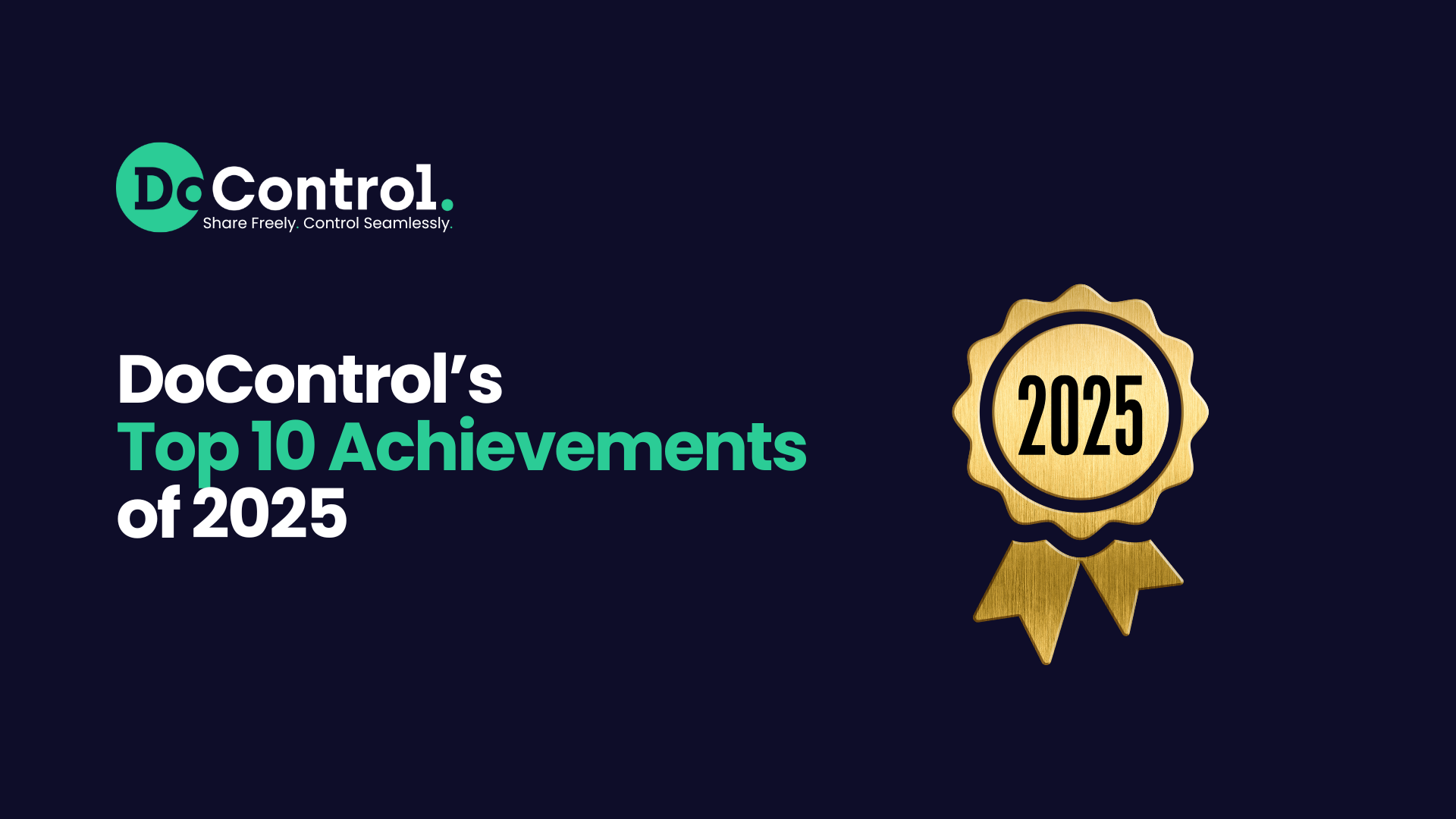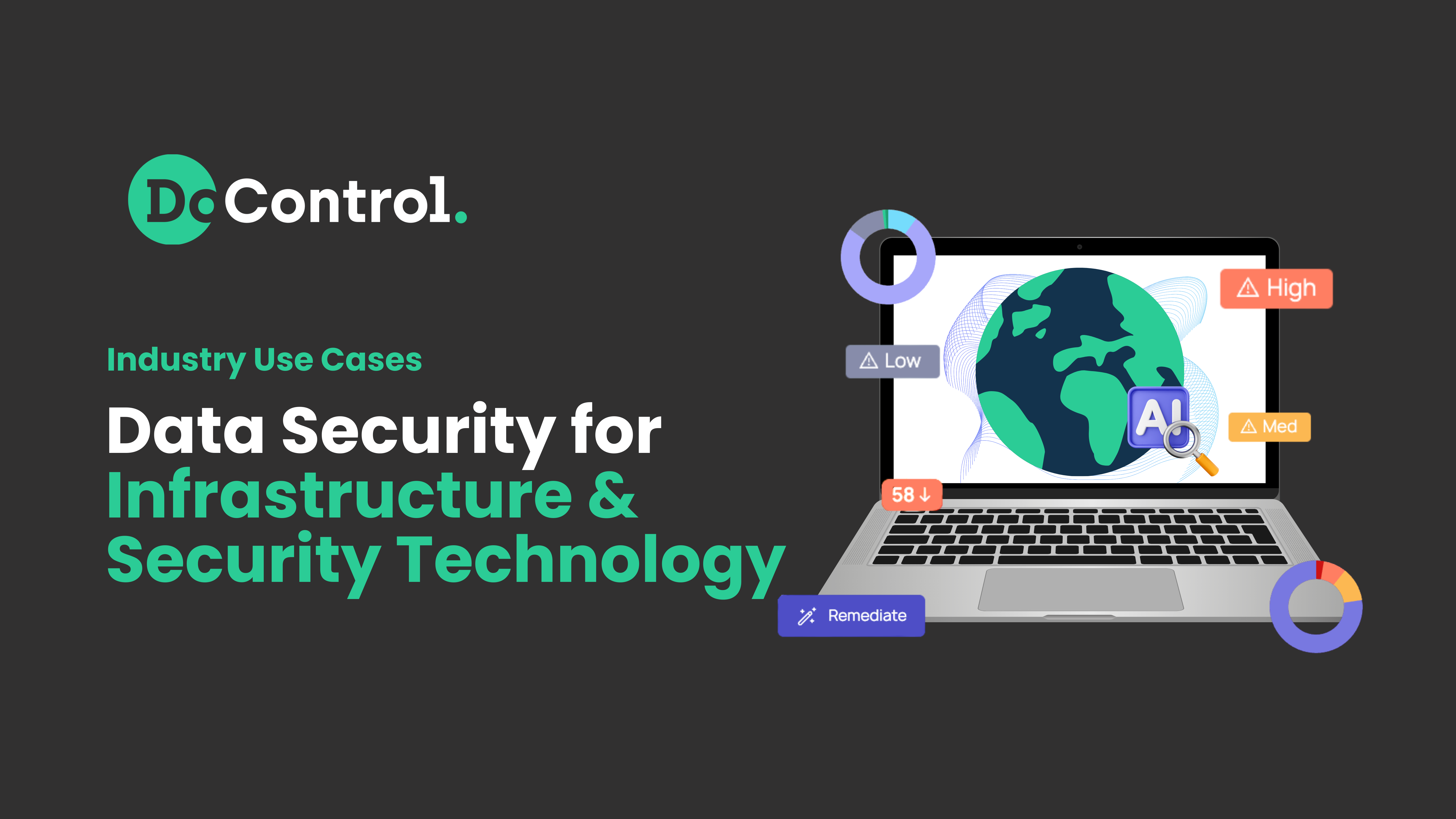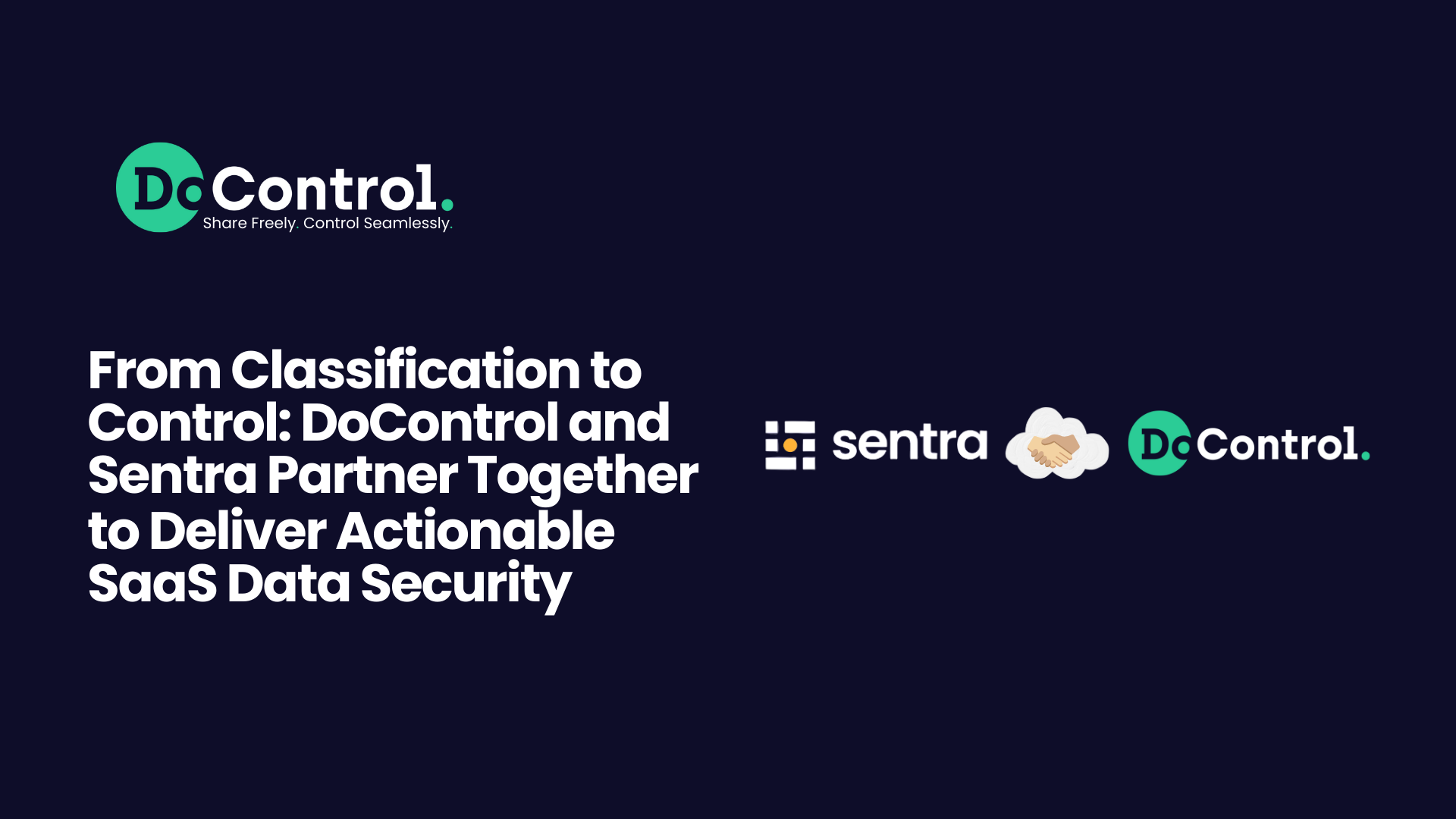
As organizations increasingly rely on Google Workspace to power collaboration, productivity, and communication, they also face a growing set of security challenges – many of which originate beyond their visibility. These are third-party connected apps, also known as shadow apps.
With just a few clicks, employees can authorize external applications to access corporate Gmail accounts, Google Drive files, Calendar data, and more, using OAuth, a protocol designed for convenience, but easily exploited when left unmanaged.
These connections often fly under the radar of IT and security teams, creating backdoors into sensitive business data without traditional indicators of compromise.
In this article, we’ll explore how shadow apps connect to your Google Workspace environment, why they’re difficult to detect, the risks they introduce, and (most importantly) what you can do to mitigate them.
What Are Shadow Apps?
Shadow apps are third-party applications that users connect to enterprise platforms – like Google Workspace – without security teams or IT’s oversight, approval, or ongoing monitoring. These apps typically gain access through OAuth, allowing them to interact with a user’s Gmail, Drive, Calendar, or Contacts with whatever level of access the user approves.
A shadow app could be as simple as an AI scheduling tool that helps you coordinate meetings in Gmail, or as complex as a project management platform that syncs with your organization’s drive files and employee emails.
Shadow Apps ≠ Shadow IT
While often used interchangeably, shadow apps and shadow IT are NOT the same thing and refer to different concepts:
- Shadow apps (the focal point of this article) are OAuth-connected applications that plug into your existing SaaS environment – like Google Workspace – but are not approved or monitored by your IT or security team.
- Shadow IT, on the other hand, refers to unauthorized hardware, systems, or services – like personal cloud storage or rogue devices – used outside of sanctioned IT infrastructure.
This distinction is critical. Shadow IT is usually visible through network or device logs, while shadow apps are stealthier: they operate via authenticated APIs, often with persistent access tokens, and they don’t require installing any software locally. That makes them harder to detect, but just as (if not more) dangerous!
How Connected Third-Party Apps Access Google Workspace Data
Third-party apps connect to Google Workspace via Ouath, which is a widely used authorization protocol that lets users grant third-party applications access to their accounts without sharing passwords. It’s incredibly convenient, and equally risky when unmanaged.
Here’s how it works:
- A user installs or signs into a third-party app using “Continue with Google.”
- The app presents a list of requested permission scopes, such as access to Gmail, Drive, Calendar, Contacts, etc.
- Once the user clicks "Allow," the app receives a token that grants it ongoing access to those services, often without expiration.

Because OAuth tokens are not tied to a specific device or session, the third-party app can continue accessing data even after the user closes the app or logs out, and in some cases, even after the user leaves the organization, unless access is manually revoked (or done so by a third party SSPM).
This is why OAuth-connected apps present such a huge challenge: they’re deeply embedded, difficult to monitor, and often installed with the best of intentions – yet they can silently exfiltrate data, persist across account changes, and open the door to sophisticated attacks.
Real World Examples of Sensitive Data Exposure That Can Occur
Even seemingly helpful apps can quietly introduce outsized risk, especially as more of them now incorporate generative AI, creating new layers of data movement and unpredictability.
Many GenAI-powered shadow apps ingest sensitive data into external models, where usage and retention policies are unclear or unknown yet.
Here are five real-world examples we typically see of how shadow apps can expose your Google Workspace data:
- An AI Note-Taking App Meant to Summarize
A user connects an AI-powered note-taking app to Google Drive. It scrapes internal strategy decks, meeting recordings, and sensitive documentation to generate meeting summaries.
Unknown to the user, the app retains copies of files and sends data to an external LLM (large language model) like ChatGPT or Claude, and feeds back ideas to anyone on the internet.
- A CRM Email Enrichment Tool Meant to Streamline
A sales exec installs a shadow app that enhances and simplifies CRM data by pulling insights from relevant key-word based Gmail threads.
The app requests broad Gmail access (like modify, read, and send), enabling it to access not just sales conversations, but also executive communications – without any internal safeguards or security policies being applied!
- An AI Scheduling Assistant Meant to Simplify
A GenAI-powered meeting assistant integrates with Google Calendar to offer scheduling suggestions, coordinate and book calls, and provide automated action items and takeaways.
It gains full access to meeting titles, participant names, client meeting agendas, and private notes – many of which contain client PII or contractual terms.
4) A Productivity Dashboard App Meant for Reporting
A project manager at a marketing agency installs a dashboard tool made to simplify reporting for their customers. This app aggregates Google Workspace data for reporting purposes, scraping Google Workspace for hours logged, activities completed, and client outcomes.
It gains access to all connected users' file structures, email metadata, and shared drives, and sensitive info — creating an unintended single point of data aggregation that lacks enterprise-level controls or visibility.
Top 5 Security Risks Posed by Shadow Apps
Shadow apps may start with good intentions: boosting productivity, simplifying workflows, or testing new tools. But, they introduce serious security and compliance risks once connected to Google Workspace.
Here are the top risks organizations face from unmanaged third-party apps:
1. Excessive Permissions
Many apps request full access when limited access would suffice. For example, a PDF editor might ask for full Drive read/write access just to open a single file. Over-scoped permissions dramatically increase the attack surface of a breach or misconfiguration.
2. Data Exfiltration and Storage
Here are a two common ways this can happen:
- File syncing: Some apps connect to Google Drive and automatically sync or back up files to their own cloud systems. That means copies of internal documents may exist outside your Workspace environment.
- Email access: Apps with access to Gmail can read and process message content, including attachments and metadata. This data might be used for things like CRM enrichment or productivity tools, but it could also be stored on external servers.
The result is a situation known as “shadow data”, where sensitive company information is being used or stored in places your security team doesn’t monitor or control. Even well-meaning tools can contribute to this if they have more access than they need, or if they operate in ways that aren’t fully transparent.
3. Persistence After User Offboarding
OAuth tokens granted to third-party apps don’t always expire when a user leaves the company. If you offboard an employee but don’t revoke all app access, their connected apps may still interact with shared resources, which is a severe risk.
Former employees still having access to critical company data can lead to sensitive data being exfiltrated, misused by disgruntled ex-employees, or even taken to a competitor and used against your company. Beyond these security risks, it also opens the door to potential compliance violations and costly breaches.
4. Malicious Hackers Exploiting the Entry Point
Cybercriminals are increasingly targeting trusted third-party apps as a way to infiltrate organizations – often through the very access users have knowingly granted – which are trusted credentials!
When employees connect an app to Google Workspace using OAuth, they create a new ‘non-human identity’ that holds its own set of permissions. These app identities can access Gmail, Drive, Calendar, and more, just like the user who approved them.
If one of these apps is later compromised or misused by a hacker, it can act as an access point, flying under the radar while still interacting with sensitive data.
An app that was safe when first connected to Google Drive might become a threat months later, yet still operate with the same trusted access.
5. Regulatory and Legal Exposure
With data flowing through unmonitored channels, your organization risks violating:
- HIPAA – if healthcare data is synced to unencrypted external apps.
- GDPR – if data leaves approved processing regions.
- SOC 2 – if third-party vendors lack controls for access logs or retention.
In short, shadow apps turn your SaaS environment into an unpredictable ecosystem and create more gaps of entry for threat actors. That is, unless you establish strong visibility and controls.
Why Most Shadow Apps Are Hard to Detect
One of the most dangerous aspects of shadow apps is their invisibility. They don't show up in device logs, don't require installations, and don't generate traditional red flags.
Here’s why detecting them is so challenging in Google Workspace:
1. OAuth Grants Are Silent and Persistent
When a user authorizes an app, there’s often no alert sent to IT. The app may remain connected indefinitely – quietly reading emails, syncing files, or pulling calendar events.
Unless an admin manually audits app access or you are using a third party SSPM vendor, these connections go undetected and the data stays at risk.
2. Google Admin Console Limitations
While Google’s native Admin Console provides basic tools for app management, Google Enterprise falls short in protecting against shadow apps. It requires significant manual effort from security teams to monitor and control OAuth-connected apps, and still lacks several critical capabilities:
- No automatic alerts for new third-party app connections
- No centralized view of connected apps across users
- No risk scoring or behavior-based anomaly detection to flag suspicious activity
3. End-User Discretion Drives Risk
Most employees don’t fully understand what permissions they’re granting. OAuth prompts can be misleading (by design), with vague scope descriptions like “view and manage your email” – which actually means read, send, delete, and forward.
User behavior in Google Workspace plays a big part in how secure an organization is. In most cases, user behavior negatively impacts Google Workspace security. Most employees are negligent – meaning they don’t mean to put company data at risk, but they simply are just unaware of the right procedures and safeguards.
4. No Endpoint or Network Signals
Because OAuth interactions happen at the API layer and are often SaaS driven, they bypass traditional endpoint protection tools, firewalls, and network monitoring solutions. That makes traditional security stacks blind to shadow apps.
Even the most mature security programs often overlook this layer, creating a blind spot that can be exploited over time. This is why a dedicated SSPM is usually needed to protect environments.
How DoControl Protects Your SaaS Environment from Third-Party Shadow Apps
Mitigating the risk of shadow apps in Google Workspace requires more than manual audits and reactive policies; it demands continuous visibility, contextual risk scoring, and automated control over OAuth-connected apps.
DoControl delivers all three.
As a SaaS Security Platform purpose-built for environments like Google Workspace, DoControl helps organizations identify, evaluate, and remediate third-party app connections that could expose sensitive data or introduce compliance risk.
1. Continuous Shadow App Discovery
DoControl automatically scans and inventories ALL third-party OAuth applications connected to your Google Workspace environment, including:
- Shadow apps that users install without IT awareness
- Abandoned or dormant apps with stale but active tokens
- Malicious apps posing as legitimate integrations
Each discovered app is enriched with contextual data such as connected users, permission scopes, and app usage history, giving security teams the granular visibility they need to assess exposure.
2. Risk-Based Evaluation of Connected Apps
DoControl doesn’t treat every app equally. It evaluates each one using a dynamic risk-scoring model that accounts for:
- Scope sensitivity (ex. full Gmail or Drive access)
- User behavior and app usage
- Geolocation of the app’s infrastructure
Taking these into account, our platform populates a custom, contextualized risk score for each app that enables security teams to prioritize high-risk apps and quickly surface outliers, rather than getting lost in a sea of benign integrations.
3. On-Demand and Automated Remediation
Once shadow apps are discovered and evaluated, DoControl makes it easy to take action, either manually or automatically:
- Suspend or revoke access to over-privileged or unused apps
- Ban future installations of known malicious or non-compliant apps
- Set automated workflows to alert on or block new app connections that violate policy
By combining real-time visibility with precision control, DoControl helps organizations enforce a least-privilege access model for SaaS applications, closing the security gap left open by unmanaged OAuth connections.
With DoControl, you gain full control over third-party app access in Google Workspace, reducing the risk of data exposure, streamlining compliance, and eliminating the blind spots created by shadow apps.
Summary
Third-party shadow apps represent a silent but growing risk to organizations using Google Workspace. While OAuth-connected applications can boost productivity, they also introduce hidden pathways for data exposure, regulatory non-compliance, and unauthorized access.
Most of these apps bypass traditional security controls and go undetected, unless you have the right tools in place.
In 2025, manual audits and native tools are not enough to detect and manage the risk. DoControl delivers continuous discovery, contextual risk evaluation, and automated remediation to help you take back control of your SaaS environment. That's the DoControl difference.
Looking to strengthen your Google Workspace security?
Start with our Google Workspace Security Best Practices guide
Learn the Pitfalls of Public Sharing in Google Workspace
Read up on Google Workspace DLP Strengths and Limitations
Understand Remediation in Google Workspace and How it Works
Learn about how User Behavior Impacts Google Workspace Security



